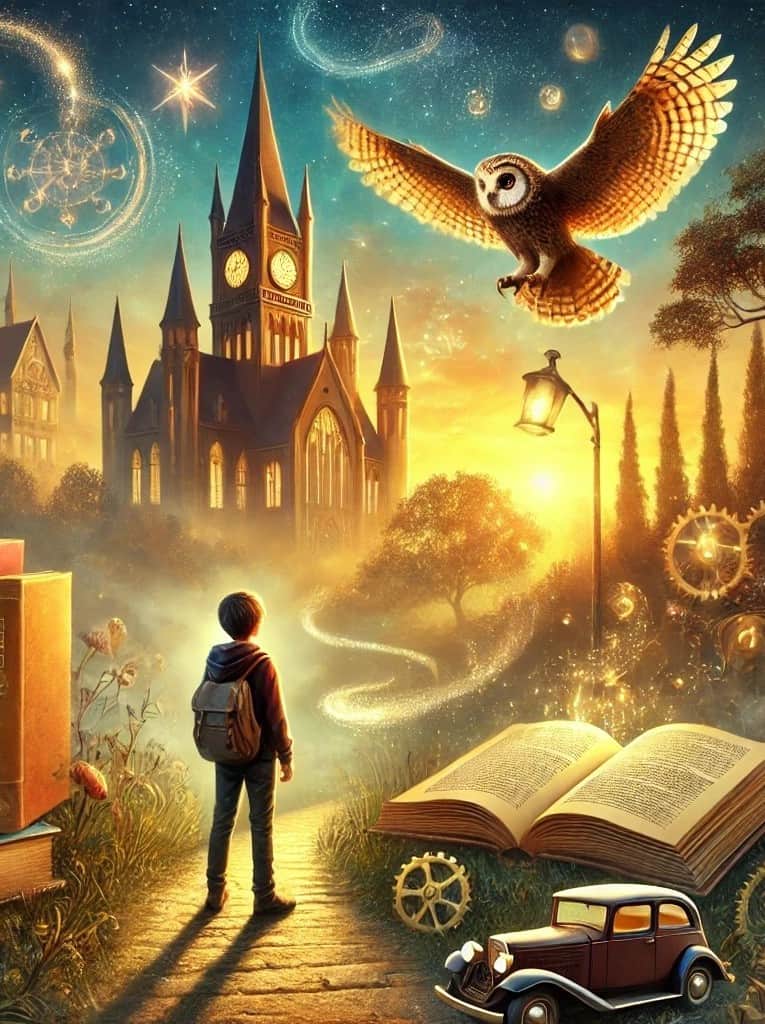Developing Dynamic Characters: 4 Powerful AI Prompts

“With the right tools and knowledge, any author can navigate this new terrain successfully.”
Hugh Howey
Developing dynamic characters presents a challenge for many new indie authors. But it’s crucial in the exciting world of indie publishing. This writer’s guide explores innovative prompts designed to enhance your ability to craft characters who leap off the page and carry the weight of their worlds.
From penning intriguing introductions to weaving complex backstories and engaging dialogues, these prompts imbue characters with depth, realism, and emotional resonance. Whether sketching a brooding protagonist or a daring heroine, the techniques for developing dynamic characters will refine your narrative and captivate readers.
This writer’s guide focuses on four effective techniques for developing dynamic characters across genres. Your characters are the heart and soul of your story. We’ll explore writing versatile AI prompts and techniques to create complex, relatable characters.
The prompts teach distilling characters’ essences with concise introductions and bringing them to life through vivid descriptions revealing more than appearances. You’ll find techniques for compelling backstories shaping motives and decisions. Additionally, you’ll discover showcasing complexities and growth through dynamic character interactions and dialogues.
Let’s get started.
1. Dynamic Characters—The Introduction
- Prompt: Ask ChatGPT to introduce your character in 100 words or less, include an emotional hook or intriguing mystery. Provide basic details about your character and specify the genre to tailor the introduction accordingly. Use this as a basis to refine the introduction to ensure it captures the essence and intrigue of your character effectively.
- Purpose: This prompt focuses on the most significant traits. It can help you clarify what your character represents at their core. Including an emotional hook or intriguing mystery about your character can immediately make the character more compelling and create a narrative question that draws readers in.
- Application Across Genres: In mystery novels, highlight a secretive or enigmatic trait. In romance, focus on a romantic dilemma or allure. In sci-fi, hint at a unique capability or origin.
2. Detailed Visual Descriptions
- Prompt: Use ChatGPT to generate a detailed visual description of your character. Provide information about their typical environment and any symbolic items they might carry or wear. Ask ChatGPT to weave these elements into the description to reflect the character’s background and the story’s setting, enhancing the depth and relevance of their appearance. Suggest ChatGPT add items or features that have symbolic value or significance to the character’s backstory or the story’s themes, such as a family heirloom or a scar with a mysterious origin.
Also, consider including in your prompt how your character’s environment might influence their appearance. For instance, attire and accessories might reflect the character’s social status, profession, or the climate of their world.
- Purpose: A detailed description will help readers visualize your character and provide insights into their lifestyle, era, or personality. This prompt encourages adding symbolic details that enhance the thematic depth of your narrative.
- Application Across Genres: In historical fiction, attire can reflect social status or historical accuracy. In horror, emphasize unsettling or eerie features that set the tone. In science fiction, descriptions might include futuristic or alien traits.
3. Crafting a Compelling Backstory
- Prompt: Collaborate with ChatGPT to develop your character’s backstory. Start with a brief outline or ask AI to write it. Include potential key relationships, as well as past moral dilemmas and choices they have faced. Ask ChatGPT to expand on these elements, creating a narrative that provides a rich foundation for understanding your character’s current motivations and behaviors. Expand the prompt to include specific relationships that have shaped the character’s worldview or personality. This could include mentors, antagonists, or lost loves. Ask ChatGPT to explore a past moral dilemma the character may have faced and the choices they made. This can provide deeper insight into the character’s ethical framework and motivations.
- Purpose: Crafting a well-developed backstory adds depth and motivation, enriching your character’s actions within the story. It explores past relationships, significant events, and personal growth that define your character.
- Application Across Genres: In crime fiction, include past encounters with law. In drama, focus on emotional and relational conflicts that shaped the character’s present desires and fears.
4. Exploring Character Interactions
- Prompt: Ask ChatGPT to introduce a scenario where the character must resolve a conflict through dialogue, which can help showcase the character’s negotiation skills, empathy, and ability to handle stress or adversity. Tell AI to simulate a dialogue between your character and another figure from your story, incorporating elements of conflict resolution and revealing hidden desires and secrets. Provide context about the relationship dynamics and the personal traits of both characters to guide the dialogue. Use ChatGPT’s output to explore and enhance the interaction, focusing on how it reveals underlying tensions, alliances, and growth in your characters. Consider asking AI to include how characters could express hidden desires or confront secrets during their conversation.
- Purpose: This prompt helps reveal character dynamics and motivations through their interactions, showcasing how they manage conflict, express emotions, engage with others, and express hidden desires. This will reveal deeper layers of their psyche and enhance the drama of the interaction.
- Application Across Genres: Use dialogue to build or resolve tensions in romance. In thrillers, weave in clues or misdirection. In fantasy, include discussions about magical or ethical dilemmas.
Dynamic Characters Wrap-Up
Developing dynamic characters transcends genre boundaries, offering a pathway to create stories that resonate with readers. By applying these prompts and techniques, indie authors can craft narratives filled with compelling, multifaceted characters who captivate readers from the first page to the last.
Embrace these strategies to enhance your storytelling skills and connect deeply with your audience. Learn to leverage character-creation tools, such as AI to make content more appealing to readers.
We hope you’ve found the strategies for developing dynamic characters useful and inspiring. We hope they’ll give you the insights and techniques needed to be successful as a new author.
Writing is a path of continuous growth. But you’re not alone. We’re here to continue the journey with you, providing guidance and encouragement every step of the way. Our goal is to provide basic insights and practical advice to help you navigate the writing world with increased confidence.
For more on using AI with your writing, see Best AI Software for Aspiring Authors and Freelancing Success: Harness the Power of AI.
If you have a draft you want to publish and wonder how AI can help, read, Is Your Book Ready to Self-Publish? Lastly, for help writing a non-fiction book, read Write Your First Non-Fiction eBook: a 30-Day Workbook for Getting It Done.
Don’t wait. Start today!
How can we help? To let us know, please fill out our contact form. Happy writing!
FAQs—Developing Dynamic Characters
These FAQs aim to clarify common queries and provide additional insights that enhance the practical application of the prompts and techniques covered.
How can I use ChatGPT to improve the emotional depth of my character?
Answer: To enhance your character’s emotional Depth, you can ask ChatGPT to generate scenarios that put your character in emotionally charged situations. Describe your character’s typical emotional responses and ask ChatGPT to expand these into a scene. This practice helps you explore varied emotional responses and refine your character’s emotional complexity.
What is the best way to use ChatGPT for creating dialogue that feels natural?
Answer: To create a natural-sounding dialogue with ChatGPT, provide it with detailed context about the character’s background, current mood, and relationship dynamics. Ask ChatGPT to simulate a conversation based on this information. Review the generated dialogue for authenticity and tweak it to align closely with each character’s voice.
Can ChatGPT help with developing the backstory of minor characters as well?
Answer: Yes, ChatGPT can be equally effective in developing backstories for minor characters. Provide basic details about the minor character and ask ChatGPT to create a concise backstory that explains their motivations and how they impact the main storyline. This helps ensure that even peripheral characters contribute meaningfully to the narrative.
How do I ensure that the character traits generated by ChatGPT remain consistent throughout the story?
Answer: After developing character traits with ChatGPT, create a character sheet that lists these traits, motivations, and any other critical details. Refer to this sheet as you write to maintain consistency. You can also use ChatGPT to periodically generate sample behaviors or decisions based on these traits to keep the character’s actions aligned with their established personality.
Is there a way to use ChatGPT to brainstorm potential plot developments that test my character’s growth?
Answer: Absolutely. Provide ChatGPT with your character’s traits and major plot points, and ask it to suggest challenges or conflicts that could test your character’s growth. This can spark ideas for plot developments that are deeply intertwined with character development, enhancing both the story’s depth and the character’s arc.

